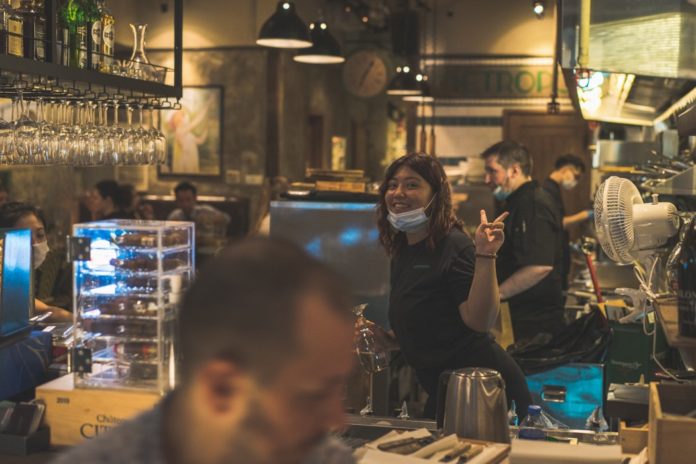In this article, we are covering the next two dimensions in our series on hospitality resilience: technology and organisational resilience.
Technology resilience: “serve guests better, improve operations and therefore thrive”
To combat the pandemic and avoid in-person crowds, it was technology that allowed businesses to stay in contact with their guests through social media or engage them through other digital platforms. Moreover, the data generated via on-premise technology can help to further improve hospitality’s business technology resilience. Let’s go over a number of ways to use technology effectively:
- Utilise Cloud technology platforms to analyse sales, manage costs, make data-driven decisions, and understand the health of your restaurant better. Do you have data insights that allow you to run your restaurant better now than what you did in the past?
- Leverage automation tools. Technology could enable waiting staff to be more productive and turn tables around more quickly. Notifications alerting waiting staff about customer experiences and when they are ready to leave the restaurant or to understand the likes and dislikes of those guests that are checking in and have a reservation.
- Conduct personal email marketing. Can you identify and communicate with your favorite customers and encourage them to come back into the restaurant at particular times and have a great experience?
- Identify latest trends with the help of Big Data and use previous searches to create more personalised experiences.
- Invest in Digital Key technology so that guests can access their rooms without face-to-face interaction at the front desk. It makes the check-in process safer and more efficient [1].
- Maybe not the most appealing option, but chatbots and artificial intelligence are gaining momentum. Bebot is a chatbot powered by artificial intelligence that acts as a hotel concierge [2].
- Use Virtual Reality as a support tool during the online booking process by showing the customer a 360-degree view of their hotel room [3].
Organisational resilience: “flexible and fulfilled”
With the pandemic forcing companies to temporarily close their businesses, a large number of hospitality employees lost their jobs and sought new employment in other industries. Entry-level workers are less likely to go back to their original job. In April 2021, searches for restaurant and food-service on jobcase, a digital job board and social network for hourly workers, were 35% lower than in the same period in 2019 [4]. The impact of shortage on labour and increasing labour cost makes it even more challenging for hospitality business operators to successfully recover from the losses suffered. In an extremely competitive market, hospitality business operators must find new ways to position themselves distinctively to attract, not only (new) customers, but also employees. Aside from raising wages, what else can business do to engage employees and attract more qualified workers? Here are a few ideas:
- Provide employees with more flexibility such as having shorter shifts and more flexible schedules (cut operation hours).
- Provide better secondary benefits.
- Consider the option of a temporary contract with a monthly salary. This is quite a risk with the uncertainty of future disruptions in the opening hours of businesses and should be evaluated against the expected local governmental support in case of new lockdowns.
- The pandemic changed the way employees (and entrepreneurs) have started to look at their work-life balance and their role in society. This has of course been discussed more in recent years, but it now seems to have gained momentum. Look for ways to bind, inspire and thus create a community of employees who do not prioritise work for money, but to make an impact and above all do what makes them happy. Look at the youngest generation of workers coming through, Generation Z, that prioritises a work-life balance more than previous generations.
- Assess skills of employees: multiskilling [5] is considered a latent solution to the issue of reduced redundancy and retaining employees in the long term. Going forward, managers must get an understanding of the evolving practices related to the employees’ engagement in multiple job roles, which is expected to become a norm in hospitality and tourism [6].
Next week we’ll discuss the final two dimensions: reputational and business model resilience. Keep an eye out!
Written by Emma Holthuis and edited by Rosa Quarato, Andrea Cattaruzza and Sarah Wixey
References and further reading
[1] https://hospitalitytech.com/how-are-hotels-adapting-and-innovating-during-covid-19
[2] https://hospitalityinsights.ehl.edu/technology-future-hospitality
[3] https://www.sciencedirect.com/science/article/pii/S0278431921001626
[4] Chen T., Haddon H., Weber L. (2021). Hospitality Firms Face a Squeeze. Wall Street Journal, CCLXXVII (148), A1, A13.
[6] Source: Hospitality and tourism industry amid COVID-19 pandemic:Perspectives on challenges and learnings from India



